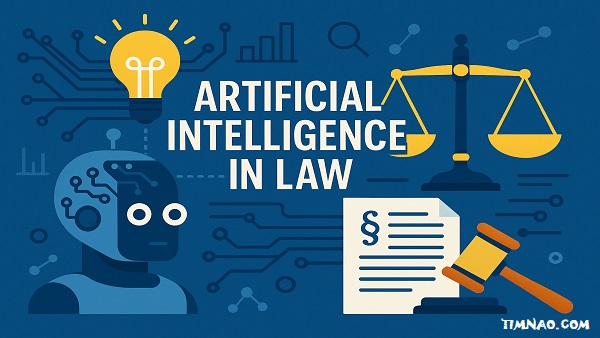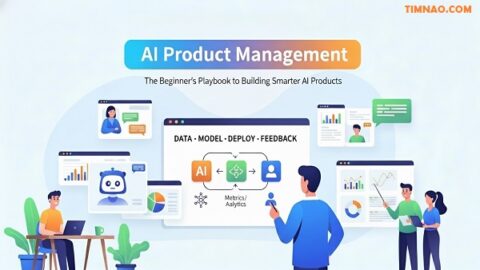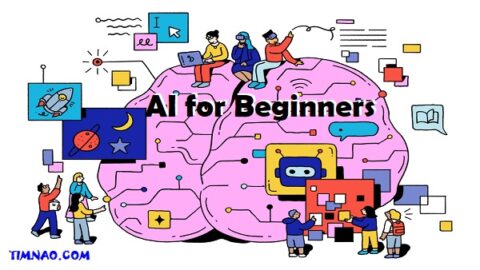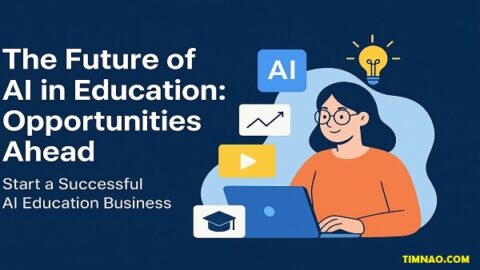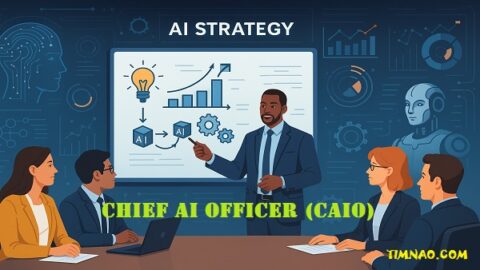🧠 Unmasking Artificial Intelligence in Law: The Hidden Power Transforming Justice ⚖️
Artificial intelligence in law is no longer a futuristic dream—it’s the present-day reality reshaping how justice is delivered, argued, and understood. From smart tools that can scan thousands of legal documents in seconds to AI assistants drafting contracts with surgical precision, the legal industry is undergoing a seismic transformation.
For decades, legal professionals were bound by tradition, paperwork, and time-consuming research. But now, AI is stepping in to handle the heavy lifting, giving lawyers supercharged capabilities and allowing even small firms to compete like giants. Still, with all this progress comes a new wave of questions: Is justice still fair if algorithms are involved? Can machines be trusted to make legal decisions? And will AI eventually replace lawyers?
If you’re curious about how this technology works, where it’s heading, and what it means for legal professionals, clients, and society, you’re in the right place.
In this beginner-friendly guide, we’ll explore how artificial intelligence is being used in legal practice today, uncover its benefits and risks, highlight the top tools transforming the industry, and reveal what you can do to stay ahead in this fast-changing legal tech landscape.
Let’s dive in 👇
📚 Table of Contents
- 🤖 What Is AI in the Legal World?
- 🧭 How Legal Tech Has Evolved: From Rule-Based Systems to AI
- ⚙️ Top Use Cases of AI in Law in 2025
- 🧠 Bias, Black Boxes & Broken Trust: The Ethical Dilemma
- 💼 Will AI Replace Lawyers or Supercharge Them?
- 🔐 Protecting Privacy in the Age of AI-Powered Law
- 📜 Legal Frameworks Playing Catch-Up
- 🛠️ Must-Have AI Tools for Legal Professionals Today
- 🔮 Future-Proofing Your Legal Career in the AI Era
- ✅ Final Thoughts: The Human-AI Alliance in Law
- ❓ FAQs: Your Beginner Questions Answered
🤖 What Is AI in the Legal World?
Artificial intelligence in law isn’t science fiction anymore—it’s real, practical, and rapidly transforming the way legal services are delivered. At its core, AI refers to machines and software that simulate human intelligence. These systems can learn from data, make decisions, and improve over time. In the legal world, AI applications go far beyond automation—they now support legal research, analyze case outcomes, and even draft legal documents.
Beginners often confuse AI with simple automation. It’s important to understand the distinction. While automation follows pre-set rules (e.g., “If this, then that”), true AI can learn, adapt, and make decisions without being explicitly programmed for every scenario.
Key Types of AI Used in Law:
- Machine Learning (ML): Helps predict case outcomes or identify patterns in contracts.
- Natural Language Processing (NLP): Allows systems to understand and summarize legal documents.
- Predictive Analytics: Estimates legal risks or outcomes based on data trends.
- Computer Vision: An emerging tool that can review images and detect fraud or signatures.
- Robotic Process Automation (RPA): Automates repetitive back-office tasks like billing or filing.
These tools don’t replace lawyers but supercharge their abilities, allowing professionals to work faster and more accurately.
🧭 How Legal Tech Has Evolved: From Rule-Based Systems to AI
The journey of AI in the legal field began with modest goals—think expert systems in the 1970s and 80s. These early systems tried to replicate how legal experts make decisions by using rules coded into software. But they lacked flexibility. If the situation didn’t match the rules exactly, the system couldn’t adapt.
The 1990s and early 2000s saw improvements with the rise of digital legal research databases like Westlaw and LexisNexis. These platforms helped speed up research but were still reliant on keyword-based searches.
Fast forward to today, and the legal landscape is filled with advanced AI-powered tools that do far more than search keywords. They understand legal language, suggest arguments, and even anticipate a judge’s likely ruling based on previous decisions.
Key Milestones in Legal AI Evolution:
- 🕹️ 1980s–90s: Rule-based expert systems (e.g., early decision trees).
- 💾 Early 2000s: Digitized legal databases and basic search tools.
- 🤖 2010s: Machine learning for contract review and e-discovery.
- 🌐 2020s+: Deep learning, NLP, and predictive tools used in litigation and legal drafting.
These leaps in tech weren’t just about convenience—they fundamentally shifted how legal professionals work. A junior associate might now rely on AI tools to scan 10,000 documents in an hour, a task that would have previously taken weeks.
⚙️ Top Use Cases of AI in Law in 2025
As of 2025, artificial intelligence in law is not just a trend—it’s a toolkit every modern legal professional must understand. From courtroom strategy to contract analysis, AI is transforming legal workflows across the board. Let’s explore some of the most practical and impactful applications reshaping the legal landscape today.
1. 🔍 Legal Research at Lightning Speed
AI tools like Westlaw Edge and Lexis+ now use NLP and predictive analytics to understand legal questions and retrieve highly relevant case law and statutes. Unlike traditional keyword searches, these systems comprehend the intent behind queries, saving hours and significantly improving accuracy.
2. 📑 Contract Review and Risk Analysis
AI contract review platforms such as Kira Systems and Luminance analyze thousands of pages in minutes, identifying key clauses, inconsistencies, or non-compliant terms. This isn’t just about saving time—it’s about reducing liability and enhancing negotiation power.
3. 🧾 E-Discovery and Document Review
Tools like Relativity Trace automate the sifting of terabytes of litigation data. AI prioritizes documents for human review based on relevance scores, using predictive coding that evolves and improves with feedback.
4. ✍️ AI-Assisted Drafting and Legal Writing
Platforms such as Clearbrief and Casetext’s Compose help lawyers draft motions, contracts, and legal memos with AI-generated suggestions, relevant citations, and even editable templates tailored to jurisdiction and legal issue.
5. 🔮 Litigation Outcome Prediction
Companies like Lex Machina offer analytics tools that predict how judges or opposing counsel have historically handled similar cases, enabling law firms to optimize legal strategies.
6. 🚔 Predictive Policing & Risk Assessment
Although controversial, AI systems are being used to forecast potential crime hotspots or assess the risk of reoffending during sentencing. While these tools can help resource allocation, they raise significant ethical questions (which we’ll explore next).
🧠 Bias, Black Boxes & Broken Trust: The Ethical Dilemma
AI brings speed and power—but also hidden dangers. For beginners stepping into legal technology, understanding the ethical risks is just as important as knowing the benefits.
🔁 Algorithmic Bias: Justice at Risk
AI learns from historical data—and legal data is often riddled with societal bias. For example, predictive policing systems trained on biased crime data have disproportionately targeted minority communities. Similarly, AI tools used in sentencing or parole decisions may suggest harsher penalties for specific demographics due to flawed training inputs.
Real-world example: A 2023 study found that an AI risk assessment tool used in U.S. courts was twice as likely to wrongly label Black defendants as high risk compared to white defendants.
🕵️♂️ Black Box Problem: Lack of Explainability
Many advanced AI systems, particularly those based on deep learning, operate in opaque ways. Lawyers and judges may find it difficult to understand why a system made a particular recommendation, making accountability nearly impossible.
This creates a troubling paradox: How can legal systems uphold transparency when the tools guiding decisions are not themselves transparent?
🧩 Accountability and Legal Liability
Who is responsible when an AI gets it wrong? Is it the software vendor, the law firm using it, or the individual lawyer? In many jurisdictions, legal frameworks are still catching up with these questions.
Until new regulations are adopted, the burden remains on law firms to implement human oversight, auditability, and ethical guidelines in every AI-assisted process.
💼 Will AI Replace Lawyers or Supercharge Them?
Let’s address the elephant in the courtroom: Will AI take over legal jobs? The short answer? Not entirely.
🤖 Tasks AI Can Handle (and Already Does)
- Reviewing and tagging thousands of documents for relevance in litigation.
- Extracting clauses and summarizing legal agreements.
- Suggesting template language for common motions or contracts.
- Highlighting risks in contracts or regulations based on historic data.
These tasks are time-consuming and repetitive, making them perfect candidates for automation.
🧠 What AI Still Can’t Do
AI struggles with:
- Strategic legal reasoning.
- Emotional intelligence in client interactions.
- Persuasive courtroom advocacy.
- Moral and ethical judgment.
These are uniquely human capabilities—and they’re still central to winning complex legal cases or negotiating high-stakes deals.
💡 A Superpowered Partnership
Rather than replacing lawyers, AI is acting as a force multiplier. A solo attorney with smart tools can now handle casework that once required a small team. This levels the playing field for small firms and allows for better access to justice in underserved areas.
📈 The Skills Lawyers Need in the AI Era
To thrive alongside AI, legal professionals must learn:
- Tech literacy: Understand how legal tech works and how to evaluate it.
- Data ethics: Know the implications of AI decision-making.
- AI tool proficiency: Use platforms like ROSS Intelligence or Lawgeex confidently.
Lawyers who combine traditional expertise with AI fluency will be in-demand professionals, ready for the future of legal practice.
🔐 Protecting Privacy in the Age of AI-Powered Law
In a world driven by data, artificial intelligence in law demands access to massive amounts of sensitive information. From client files and financial records to court documents and private communications, AI systems thrive on data—but this reliance introduces serious privacy and security risks.
🔓 What’s at Stake?
Legal professionals handle some of the most confidential information in society. AI-powered tools used for document review, case research, or predictive analytics must access—and often store—this data. A single breach could expose personal client details, trade secrets, or privileged communications.
As AI systems continue to integrate with cloud-based services and remote work environments, the attack surface expands. Law firms, already attractive targets for cybercriminals, face even higher stakes with AI in the mix.
📜 Regulations You Need to Know
Several data protection laws now directly impact how AI in legal tech must be handled:
- GDPR (EU) – Enforces strict rules around data consent, access, and usage. Legal AI tools must be transparent about data use and allow for data erasure on request.
- CCPA (California) – Gives consumers the right to know what data is collected and how it’s used—especially relevant in consumer litigation.
- AI Act (EU – upcoming) – Classifies certain legal AI applications as “high-risk,” mandating extra transparency, auditability, and oversight.
Violations of these laws don’t just risk fines—they can destroy reputations and breach client trust.
🔐 Best Practices for Legal Professionals
To stay compliant and protect your clients’ data:
- Encrypt everything – End-to-end encryption should be standard for storage and transmission.
- Limit data access – Only authorized personnel should interact with AI tools handling sensitive information.
- Vet your tools – Ensure every AI platform you use follows major data protection regulations.
- Maintain logs and audit trails – For accountability and legal defense, keep detailed records of AI usage and data access.
By proactively protecting privacy, legal professionals not only avoid liability—they strengthen client relationships and build long-term trust in a digital-first era.
📜 Legal Frameworks Playing Catch-Up
AI is advancing fast—faster than the laws meant to govern it. As legal professionals adopt cutting-edge tools, lawmakers and regulators are scrambling to develop rules, definitions, and protections to keep up with the tech curve.
🧩 What Makes AI So Legally Complex?
AI operates in gray areas that challenge traditional law. For instance:
- Who is liable when an AI tool gives flawed legal advice?
- Can AI-generated content (like a draft contract) be copyrighted?
- Is a lawyer negligent for following AI’s incorrect recommendation?
These are not hypothetical questions—they’re already emerging in real-world cases.
🏛️ Emerging Global Legal Trends
Here’s how the world is responding:
- United States – Existing frameworks like tort law and legal malpractice statutes are being tested in AI cases. Several states are drafting laws specifically addressing automated decision-making and algorithmic transparency.
- European Union – The upcoming EU AI Act is the most comprehensive attempt to date, creating tiers of AI risk and enforcement rules. High-risk applications (like sentencing AI or predictive policing) must meet strict standards for explainability, human oversight, and data quality.
- Asia-Pacific – Countries like Singapore and South Korea are pushing for AI ethics sandboxes, where firms can test legal tech innovations in controlled environments under regulatory guidance.
🧠 Legal Professionals Must Take the Lead
Instead of waiting for regulators to catch up, lawyers can lead the charge:
- Join conversations about ethical AI standards in your jurisdiction.
- Advocate for clear guidelines on AI-generated legal work and liability.
- Help shape policies that protect clients without stifling innovation.
Ultimately, lawyers must become interpreters between AI developers and legal systems, ensuring the tools align with justice—not just algorithms.
🛠️ Must-Have AI Tools for Legal Professionals Today
Whether you’re an independent attorney, a law student, or part of a large firm, AI legal tools are no longer optional—they’re essential for competing in a modern legal environment.
Here are the top categories and examples of tools you should explore in 2025:
📚 1. AI-Powered Legal Research Tools
- Lexis+ – Uses machine learning and NLP to deliver smarter, context-aware search results.
- Westlaw Precision – Offers citation analysis, brief mapping, and predictive case law insights.
- Casetext – Features a ChatGPT-style legal assistant called “CoCounsel” for conversational case law queries.
These tools reduce legal research time by up to 70% and help you avoid missing crucial precedents.
📄 2. Contract Review & Analysis
- Kira Systems – Extracts clauses, flags risks, and learns from past contract reviews.
- LawGeex – Compares your contracts to company policy and industry standards in minutes.
- Luminance – Uses pattern recognition to highlight anomalies across thousands of contracts.
For high-volume contract work, these tools are game-changers.
🧠 3. Legal Writing and Brief Drafting
- Clearbrief – Suggests evidence and citations to strengthen arguments.
- Compose by Casetext – Offers structured motion drafting based on jurisdiction and issue.
- BriefCatch – Legal writing enhancement tool to improve clarity and persuasiveness.
They help polish your writing and ensure your argumentation is sharp and compliant.
⚖️ 4. Litigation Analytics and Strategy
- Lex Machina – Reveals judge behavior, law firm trends, and case outcome probabilities.
- Trellis – State trial court analytics that help you tailor arguments to specific judges.
These tools allow for data-driven litigation strategy that boosts your odds in court.
🔍 5. E-Discovery and Document Review
- Relativity – Uses AI to sift through massive case files and flag relevant content.
- Everlaw – Combines project management, e-discovery, and data visualization in one platform.
These are crucial for litigation involving large amounts of digital evidence.
🔮 Future-Proofing Your Legal Career in the AI Era
The rise of artificial intelligence in law isn’t a passing trend—it’s a long-term shift that’s redefining what it means to be a legal professional. The question is no longer if AI will impact your career, but how well you prepare for it.
🎓 Rethink Legal Education and Skill Sets
Today’s law schools are slowly adapting, but it’s up to individuals to seek out tech-forward learning opportunities:
- Enroll in courses on legal innovation, AI ethics, or data privacy law.
- Learn the basics of tools like Lexis+, CoCounsel, or Luminance.
- Understand how to interpret data analytics in litigation and compliance.
Even basic knowledge of how AI systems function (e.g., what machine learning is, how NLP works) will help you make smarter decisions when choosing tools or evaluating evidence generated by algorithms.
🧰 Build a Hybrid Skillset: Legal + Tech + Strategy
To thrive in the AI-powered legal landscape, aim for the T-shaped professional model:
- Deep legal knowledge (your base).
- Cross-disciplinary skills in tech, data, and innovation strategy (your horizontal edge).
This makes you indispensable to forward-thinking firms, startups, or government initiatives where legal AI is in full swing.
💼 Embrace Roles That AI Can’t Fill
AI is great at repetition. You aren’t.
To future-proof your value, focus on roles that require:
- Critical legal thinking and nuance.
- Ethical judgment and empathy.
- Strategy, negotiation, and complex litigation.
- Creative argumentation and persuasion.
Clients don’t just hire lawyers for legal code—they want guidance, trust, and human insight. That will never be replaced by a chatbot.
✅ Final Thoughts: The Human-AI Alliance in Law
AI is transforming law, but it’s not replacing it.
In fact, the future of justice will depend on collaboration between humans and machines, not competition. AI can handle the heavy lifting—reviewing mountains of documents, identifying risk patterns, or drafting boilerplate contracts. But it’s the human lawyer who interprets the data, makes ethical decisions, and connects with clients.
⚖️ A Shared Vision for Justice
To ensure that this tech revolution benefits everyone, we need:
- Accountability for AI developers and users.
- Ethical guidelines that prioritize transparency and fairness.
- Legal frameworks that protect privacy and human rights.
- Inclusive access to legal AI tools—so they don’t become a privilege of the few.
Just as calculators didn’t destroy mathematics, AI won’t erase lawyers. But it will reshape the way we deliver justice. The legal professionals who learn to harness this power responsibly will define the next generation of legal leadership.
❓ FAQs: Your Beginner Questions Answered
Q1: What’s the difference between AI and automation in law?
Automation follows preset rules (e.g., autofill forms), while AI learns from data, adapts, and can make decisions (e.g., predicting case outcomes or suggesting contract revisions).
Q2: Do I need to be a tech expert to use legal AI tools?
Not at all! Most tools today are designed to be user-friendly. You don’t need to code—just understand what the tool does, how it fits into your workflow, and how to use it responsibly.
Q3: Is it ethical to let AI draft legal documents or analyze cases?
It can be, if used responsibly. AI should assist, not replace, legal judgment. Always review and verify AI-generated outputs, and ensure compliance with privacy laws.
Q4: What if my firm can’t afford expensive AI software?
There are open-source and affordable legal tech tools available. Also, many platforms offer per-use pricing or cloud-based models that reduce upfront costs. Don’t overlook free AI-powered research platforms or trial versions to get started.
Q5: Will AI take away legal jobs?
AI will automate routine tasks, but lawyers who adapt will find new opportunities—in strategy, ethics, policy, or hybrid legal-tech roles. Upskilling is the key to staying relevant.
Q6: How can I start learning about AI in law?
Start with free resources like:
- Harvard’s AI and Law course
- LegalTechHub
- Follow blogs like Artificial Lawyer or LawSites
Also, network with peers using tools like LinkedIn LegalTech groups or legal tech conferences.
🏁 Conclusion: From Understanding to Action
You’ve just explored how artificial intelligence in law is reshaping everything—from research and drafting to ethics and policy. Now it’s your move.
Start with a single tool. Explore a legal AI course. Ask your firm how it’s preparing. Because the lawyers who embrace this transformation today will be the ones who lead tomorrow’s justice system—with clarity, compassion, and courage.
Reference video:

